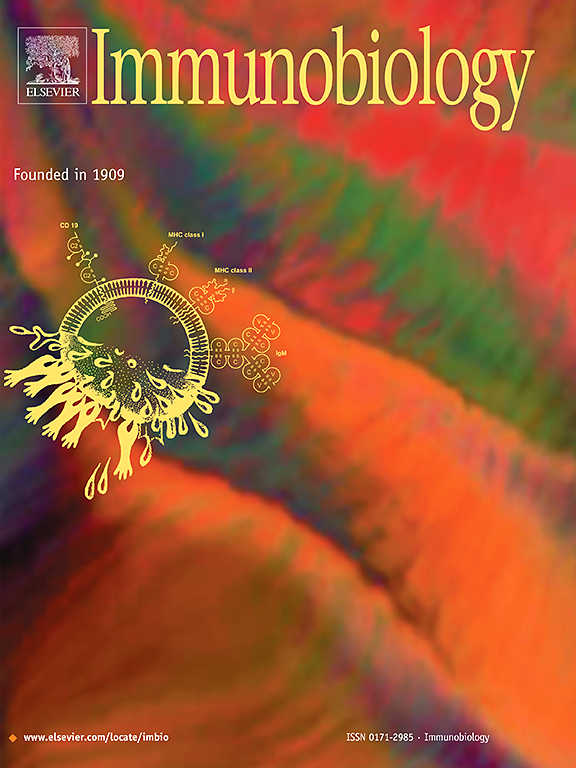Assessment of cellular immune phenotype of peripheral blood mononuclear cells in Bangladeshi children with severe acute malnutrition
IF 2.3
4区 医学
Q3 IMMUNOLOGY
引用次数: 0
Abstract
Children suffering from severe acute malnutrition (SAM) have a weakened immune system. The relationship between malnutrition and alterations in the frequency of peripheral blood mononuclear cells (PBMCs) remains unclear. This study investigated the altered immune responses in Bangladeshi children with SAM compared to healthy children. PBMCs were collected from 24 healthy children and 25 children with SAM upon their hospital admission and after 21 days of nutritional therapy at a nutritional rehabilitation unit. Flow cytometry was employed to assess various subsets of T cells, B cells, and natural killer (NK) cells. Children with SAM exhibited significantly lower levels of activated (CD25+) B cells (SAM vs. healthy: 0.18 % vs. 0.30 %, p = 0.031) and NK cells (SAM vs. healthy: 4.9 % vs. 9.6 %, p = 0.003) compared to healthy controls. Similar immune responses were observed in SAM children during both hospitalization and discharge, with NK cell percentages showing slight increases but remaining significantly lower than in healthy children (SAM endline vs. healthy: 5.9 % vs. 9.6 %, p = 0.032). Notable reductions were also observed in CD62+ helper T cells, CD62L+ cytotoxic T cells, and CD62L+ B cells. These results suggest that although SAM children recover clinically, their immune systems remain compromised during discharge.
孟加拉国严重急性营养不良儿童外周血单个核细胞细胞免疫表型的评估
患有严重急性营养不良(SAM)的儿童免疫系统较弱。营养不良与外周血单个核细胞(PBMCs)频率变化之间的关系尚不清楚。本研究调查了孟加拉国SAM儿童与健康儿童相比免疫反应的改变。从24名健康儿童和25名SAM儿童入院时和在营养康复单位接受21天营养治疗后收集pbmc。流式细胞术用于评估T细胞、B细胞和自然杀伤(NK)细胞的各种亚群。与健康对照相比,SAM患儿的活化(CD25+) B细胞(SAM vs.健康:0.18% vs. 0.30%, p = 0.031)和NK细胞(SAM vs.健康:4.9% vs. 9.6%, p = 0.003)水平显著降低。在住院和出院期间,SAM儿童观察到类似的免疫反应,NK细胞百分比略有增加,但仍显着低于健康儿童(SAM终末:5.9%对9.6%,p = 0.032)。在CD62+辅助性T细胞、CD62L+细胞毒性T细胞和CD62L+ B细胞中也观察到明显的减少。这些结果表明,尽管SAM儿童在临床上康复,但他们的免疫系统在出院时仍然受损。
本文章由计算机程序翻译,如有差异,请以英文原文为准。
求助全文
约1分钟内获得全文
求助全文
来源期刊

Immunobiology
医学-免疫学
CiteScore
5.00
自引率
3.60%
发文量
108
审稿时长
55 days
期刊介绍:
Immunobiology is a peer-reviewed journal that publishes highly innovative research approaches for a wide range of immunological subjects, including
• Innate Immunity,
• Adaptive Immunity,
• Complement Biology,
• Macrophage and Dendritic Cell Biology,
• Parasite Immunology,
• Tumour Immunology,
• Clinical Immunology,
• Immunogenetics,
• Immunotherapy and
• Immunopathology of infectious, allergic and autoimmune disease.
 求助内容:
求助内容: 应助结果提醒方式:
应助结果提醒方式:


